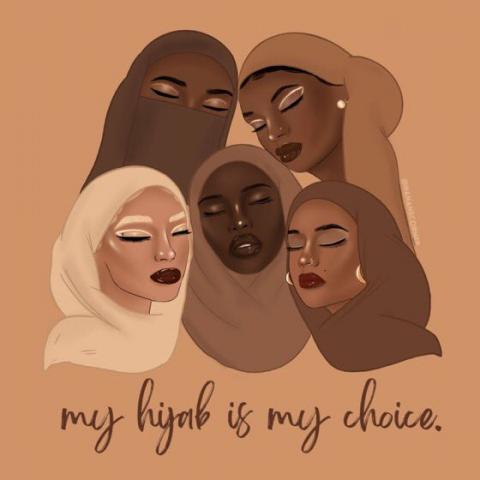
A manufactured debate…”The Hijab Controversy”
The Hijab row is snowballing into a state-wide propaganda that has now reached Delhi and appears to stay unsettled for some more time now. Though the country has much larger and pertinent issues to discuss, still our media has successfully dragged our country to this ‘manufactured’ controversy.
There are some subjects, which are adequately addressed through the provisions in our constitution. The dress code is one such domain. Part 3 of the Indian constitution, which talks about the fundamental rights, has enough provisions to settle this issue squarely. This section of the constitution amply focuses on one’s right to exercise one’s choice. The other section, which ensures people’s right to choose a dress comes under the constitutional provision of religious and cultural rights.
Even after a month of debate, the issue appears to be still floating at a surface level. We need to engage with it at a deeper level.
Dearden, a British philosopher, categorises human understanding into three brackets - Perceptual, Practical and Theoretical. By perceptual he means “such concepts of physical objects and properties as those of tree, flower, dog, bird and stone, red, square, loud, hot, sticky and heavy. The class may be defined sufficiently precisely for our purpose as that of concepts, the principle of unity of which is a set of manifest properties or relations.” Quoting Heidegger about the practical concepts, Dearden writes ‘practical’ concepts are intended concepts of what Heidegger calls ‘the equipment’, namely concepts of objects which physically exist but which cannot be understood apart from seeing how they function in a form of social life”. Explaining further he writes about ‘Theoretical concepts’ in the sense that we have roughly indicated, organized in highly systematic ways our ordinary, ‘commonsense’ experience, and in doing so , it greatly enhances our intellectual understanding of it.
Looking at the frame provided by Dearden to understand and engage with an issue such as the wearing of HIJAB, it appears that the debates have surfaced only at our perceptual understanding. The debate must move from perceptual to practical and then to the theoretical level.
Defying Dearden’s theoretical perspective of organizing our ordinary, ‘commonsense’ experience, we are ignorantly slipping towards making it ‘nonsensical’. Doesn't the unsettling debate on this issue in the ‘mainstream’ media smell ‘nonsensical’ ?
I suggest the readers ponder over a point of relevance - What are the parameters of defining a dress code as progressive or regressive? Well, there’s no defined standard provision and there shouldn't be any. Democratically, it is related to one’s freedom of expression which is a fundamental principle of the constitution. On all occasions, the court has also rightly upheld the right of the people to exercise the constitutionally guaranteed rights.
The right to dress-up is a personal entitlement! Often the choice of clothing is influenced by social, geographical, climatic, religious and cultural elements. Unfortunately and unjustly, we have typified some forms of costuming to symbolise modernity. Modernity reflects in thoughts and ideas one believes in not in the cloth one wears. Our choice of dressing-up is one of the most dominant ways to express our values and beliefs. The history is full of examples of how people at different stages have used it to project and/or resist. To quote one of the tallest figures in this field, Mahatma Gandhi calmly used his dressing to express his patriotic notions of resistance to the foreign rule.
So when we see Hijab and quickly associate it with Islam and regressive nature of society, we just miss to understand the larger feature around this idea of attiring. Let us not forget that it’s a democratic right. The constitutional experts find at least 2-3 clauses in the constitution which defends the choice of a person to wear a particular garment, subject to the restriction imposed by the state, keeping in view the law and order of the place. As is apparent, school students wearing Hijab do not breach the law and order in any sense. However, we must debate around deeper issues - whether Hijab be made a mandatory component of school uniform? Who is the authority to decide how much of what is appropriate and what are its defining parameters?
We need to contemplate and outrightly reject the communal overtones of such debates and the way a certain section of media (now popularly known as Godi Media) is trying to portray it. We cannot deny the fact that clothing and particularly the dressing of women has been extensively used by society to define the sexuality of women.
Choice is a right, it must be safeguarded; however, we must also question how cleverly it may get fabricated into a manufactured debate.
- Log in to post comments
